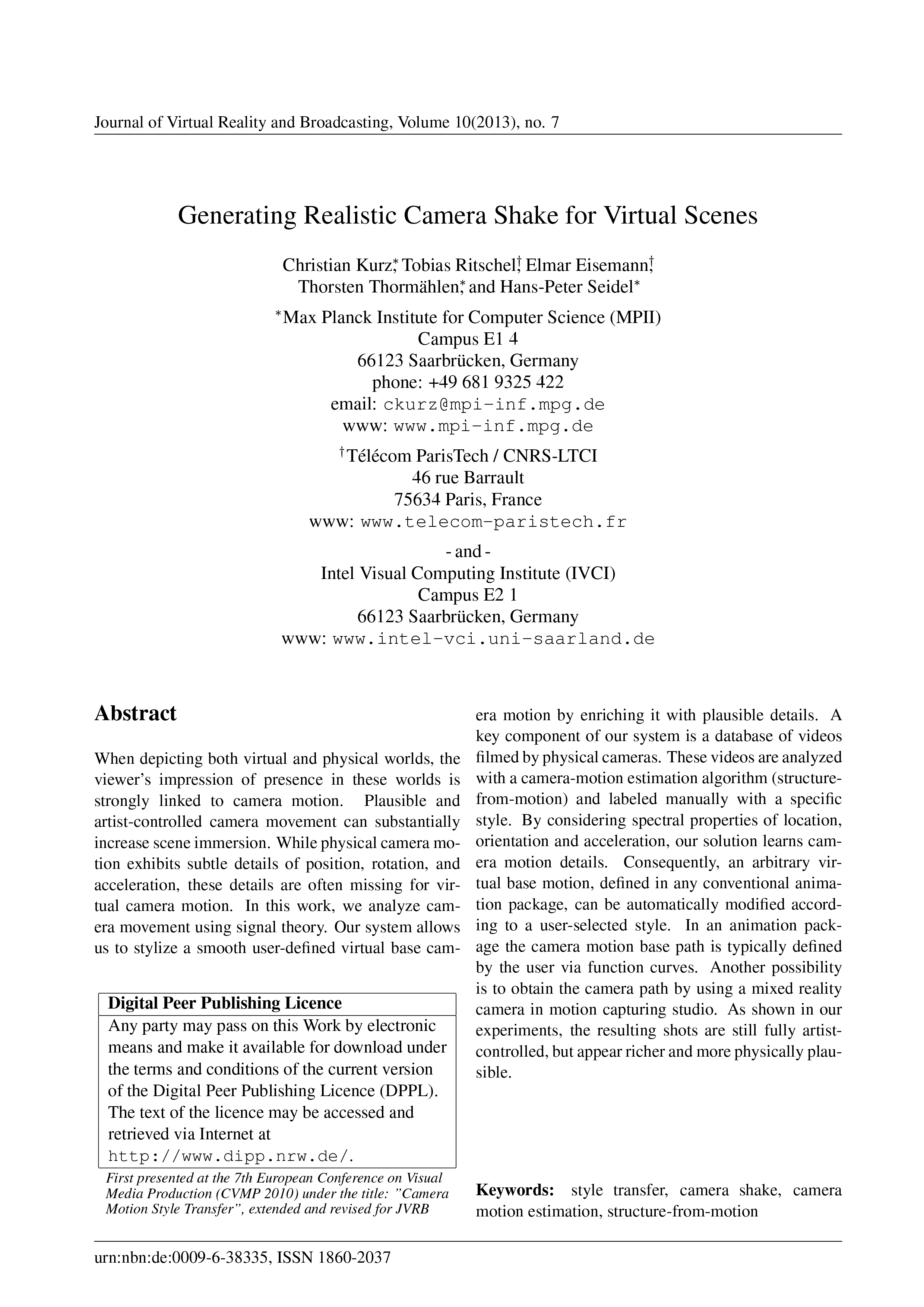Generating Realistic Camera Shake for Virtual Scenes
DOI:
https://doi.org/10.20385/1860-2037/10.2013.7Keywords:
camera motion estimation, camera shake, structure-from-motion, style transferAbstract
When depicting both virtual and physical worlds, the viewer's impression of presence in these worlds is strongly linked to camera motion. Plausible and artist-controlled camera movement can substantially increase scene immersion. While physical camera motion exhibits subtle details of position, rotation, and acceleration, these details are often missing for virtual camera motion. In this work, we analyze camera movement using signal theory. Our system allows us to stylize a smooth user-defined virtual base camera motion by enriching it with plausible details. A key component of our system is a database of videos filmed by physical cameras. These videos are analyzed with a camera-motion estimation algorithm (structure-from-motion) and labeled manually with a specific style. By considering spectral properties of location, orientation and acceleration, our solution learns camera motion details. Consequently, an arbitrary virtual base motion, defined in any conventional animation package, can be automatically modified according to a user-selected style. In an animation package the camera motion base path is typically defined by the user via function curves. Another possibility is to obtain the camera path by using a mixed reality camera in motion capturing studio. As shown in our experiments, the resulting shots are still fully artist-controlled, but appear richer and more physically plausible.
Additional Files
Published
2014-01-22
Issue
Section
CVMP 2010





